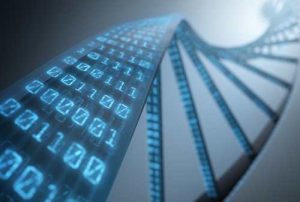DNA Ultimate Storage Solution From Los Alamos National Laboratory
Double helix can archive staggering amount of information in small volume.
This is a Press Release edited by StorageNewsletter.com on June 18, 2021 at 2:32 pmBy Latchesar Ionkov, computer scientist and principal investigator on the ADS Codex project, and Bradley Settlemyer, storage systems researcher and systems programmer specializing in HPC, both from Los Alamos National Laboratory
In a world flooded with data, figuring out where and how to store it efficiently and inexpensively becomes a larger problem every day. One of the most exotic solutions might turn out to be one of the best: archiving information in DNA molecules.
The prevailing long-term cold-storage method, which dates from the 1950s, writes data to pizza-sized reels of magnetic tape. By comparison, DNA storage is potentially less expensive, more energy-efficient and longer lasting. Studies show that DNA properly encapsulated with a salt remains stable for decades at room temperature and should last much longer in the controlled environs of a data center. DNA doesn’t require maintenance, and files stored in DNA are easily copied for negligible cost.
Even better, DNA can archive a staggering amount of information in an almost inconceivably small volume. Consider this: humanity will generate an estimated 33ZB of data by 2025. DNA storage can squeeze all that information into a ping-pong ball, with room to spare. The 74 million million bytes of information in the Library of Congress could be crammed into a DNA archive the size of a poppy seed – 6,000x over. Split the seed in half, and you could store all of Facebook’s data.
Rest of the story as it appeared in Scientific American.















 Subscribe to our free daily newsletter
Subscribe to our free daily newsletter

